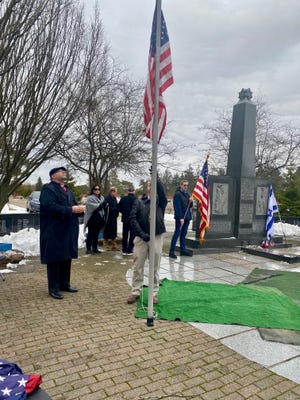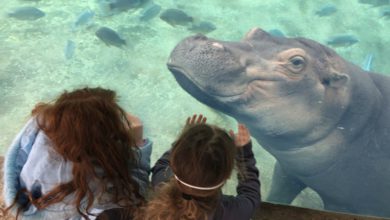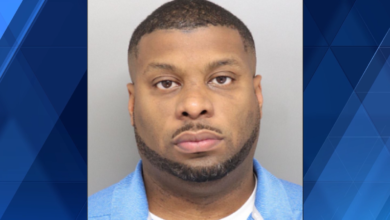
The Holocaust Monument at Zion Memorial Park in Bedford Heights, Ohio, has been an anchor for the Cleveland area's Jewish community for more than 60 years. Now, it is the first Holocaust remembrance site outside Washington, D.C., to be designated a National Holocaust Memorial by U.S. lawmakers.
The monument is likely the first and oldest Holocaust memorial in the United States, according to a statement from U.S. Sen. Sherrod Brown of Ohio and the Kol Israel Foundation, a nonprofit founded in 1959 by Holocaust survivors who settled in Cleveland.
"This designation of a national memorial ensures that the Holocaust can't be denied. It can't be forgotten," Kol Israel Foundation executive director Hallie Duchon told USA TODAY.
The designation came as part of the federal omnibus spending bill Congress passed Dec. 23.

When was the Holocaust memorial created?
The towering obelisk monument, which includes a crypt holding the remains of people murdered during the Nazi genocide, was created by Holocaust survivors in 1961. Decades later, in 1993, the U.S. National Holocaust Memorial Museum opened in Washington, D.C.
In the 1950s, the late Morry Malcmacher thought Holocaust survivors in Ohio needed a place to honor lost family members by saying kaddish, a Jewish prayer recited for the dead. Before coming to the United States, Malcmacher survived multiple German concentration camps as a teenager before he was liberated from the Dachau camp, his daughter, Anne Adelman, 75, told USA TODAY.
"After we did come to America and they settled in, my father was just burning for a place where he could say kaddish for his parents," said Adelman, who was born in a camp for displaced persons in Feldafing, Germany, in 1947.

'THE FEAR IS REAL':Menorahs mean more this Hanukkah amid rising antisemitism
Holocaust survivors remember Nazi Germany
When World War II began, Louise Gips, 89, and her family were taken from their home in Poland when she was a child and forced to work in a labor camp in Siberia as prisoners of war, she said.
For the next two years, Gips and Jews from her town endured starvation, beatings and disease stemming from crowded conditions and lack of medicine, she said. Her late husband lost his entire family to Nazi gas chambers, she said.
"Not one, not even a cousin or anyone, was left," Gips said.
After World War II ended and Gips discovered strangers living in her family's house in Poland, she and her parents and siblings went to a displaced persons camp in Germany. From there they made it to the United States and settled in Ohio when Gips was 14.
"It's a miracle that you got to live through the war, because so many people did not," Gips said. "It was a miracle that we're here, and our biggest worry was that the world would not remember.
"Now that we're all getting a little old, the monument will be there to remind the world and not let it forget."

Antisemitism on the rise in US
Members of Congress and President Joe Biden gave the Ohio Holocaust memorial its national designation at a time when antisemitism is at an all-time high in the United States, according to the Anti-Defamation League.
Several high-profile instances of athletes, music performers and TV hosts spreading antisemitic misinformation have occurred in recent months, drawing criticism from civil rights groups.
That makes Ohio's National Holocaust Memorial designation even more important, Duchon said. U.S. Rep. Shontel M. Brown worked with Sen. Brown and other lawmakers to get the measure passed.
"Those people who want to deny it, they could try, but this really happened," Duchon said.
The national memorial designation "safeguards the legacies and stories of our ancestors, which is really fundamental to providing our authentic Holocaust education program," she said.
Gips said she would respond to Holocaust deniers by introducing herself and her family members who are "miracles of survival."
"Look at me, look at my children, look at my family. You're looking at pure miracles," she said.

Source link








